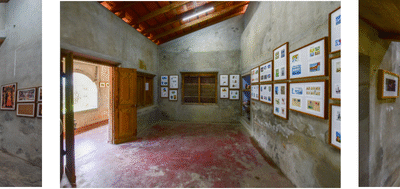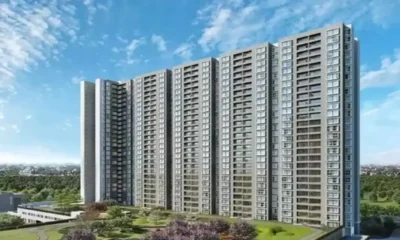Guest Column
Ultimate 2025 Guide: Why Commercial Real Estate Should Be Your Focus

By Prakash Mehta, CMD, Ocus Group

The commercial real estate sector is entering a transformative phase shaped by shifting workplace dynamics, infrastructure expansion and the growing emphasis on sustainability and quality. What was once considered a slow-moving, institutional asset class is commanding attention from a broader set of investors, developers and business occupiers.
In 2025, this segment is no longer playing catch-up—it is setting the pace. With increasing demand for premium office spaces, the expansion of global capability centres (GCCs) and the evolution of mixed-use formats, commercial real estate is emerging as a stable and future-focused investment avenue.
Moreover, commercial assets are offering a blend of resilience and adaptability that few other asset classes can match. Consistent rental yields, reduced vacancy levels, rising absorption across key metros and a sharp pivot toward green-certified, tech-enabled buildings are driving investor confidence.
Rising Office Space Demand from GCCs and MNCs
Delhi-NCR continues to strengthen its position as a preferred destination for multinational corporations and GCCs owing to its strategic connectivity, robust infrastructure and pro-business environment. In recent years, the region has seen a notable rise in demand for office spaces, particularly across prominent commercial zones like Gurugram, Noida and Faridabad.
GCCs have significantly ramped up their leasing activity, occupying 24.9 mn sq ft (MSF) of office space in 2024, nearly three times the 9.1 MSF recorded in 2022. Their contribution to total leasing activity has also surged rising from 13 per cent in 2022 to 28 per cent this year.
According to JLL, Delhi-NCR recorded 9.4 MSF in net absorption for 2024 with 2.9 MSF absorbed in the last quarter alone. This uptick has been primarily fuelled by the growing footprint of GCCs and MNCs, especially those seeking agile and flexible office solutions, together making up 56 per cent of gross leasing across India last year.
Flexible Workspaces and Co-working Boom
The flexible office space segment is undergoing a structural evolution with Delhi-NCR emerging as one of the most dynamic markets leading this transformation. As companies prioritise agility, scalability and cost-effective workspace solutions, the demand for co-working and managed offices in the region has accelerated significantly.
According to ICRA, the supply of flexible workspaces across the top six cities is expected to grow at a strong CAGR of 21-22 per cent between FY2025 and FY2027, reaching 125 MSF by March 2027—a large share of which will be absorbed by Delhi-NCR given its dense corporate footprint.
In 2024, flexible workspaces accounted for over 12.5 MSF of office leasing nationally, marking a 44 per cent YoY increase with Delhi-NCR contributing notably to this trend. Vacancy levels in micro-markets like Gurugram and Noida have tightened, reflecting the growing appetite for ready-to-move, tech-enabled workspaces.
Tapping into this shift is Flexo—a tech-driven commercial advisory and marketplace, which is increasingly enabling businesses in Delhi-NCR to embrace flexible, future-ready office models with speed and efficiency.
Infrastructure-led Growth Boosting CRE
Infrastructure-led growth continues to be a major catalyst for commercial real estate expansion in Delhi-NCR—Sohna Road is a shining example of this transformation. Once a peripheral stretch on the city’s edge, Sohna Road is now a well-connected corridor linking key infrastructure like the KMP Expressway, Delhi-Mumbai Expressway, Delhi-Meerut route and the upcoming Jewar Airport via the extended network.
This enhanced connectivity has not only improved ease of access for commuters and businesses but has also unlocked immense potential for Grade-A office developments. Sector 68, in particular, is emerging as a strategic commercial micro-market, attracting occupiers looking for modern office spaces at relatively competitive rentals compared to traditional business districts.
With the added advantage of green surroundings, lower congestion, and evolving social infrastructure, Sector 68 is fast becoming a preferred choice for companies that prioritise accessibility, quality of life for employees and long-term growth prospects.
Commercial real estate is emerging as one of the most promising asset classes in 2025, offering strong rental yields, long-term stability and rising demand. With areas like Sector 68 and Sohna Road gaining traction due to infrastructure upgrades, affordability and growing occupier interest, investors have a unique opportunity to enter high-potential markets early.
The combination of consistent returns, evolving tenant preferences and strategic location advantages makes commercial property a compelling choice. For those looking to diversify portfolios and capitalise on shifting workplace trends, the time to focus on commercial real estate is now, and the rewards are built to last.
DISCLAIMER: The views expressed in the above piece are personal and solely those of the writer. They do not necessarily reflect Realty&More’s views.

 News2 weeks ago
News2 weeks agoInfrastructure Automation Company Enlite Launches World’s First Patented Edge Controller for Intelligent Infrastructure

 News2 days ago
News2 days agoTWH Hospitality Announces Aggressive F&B Expansion Plan with ₹30 Cr Investment

 News2 weeks ago
News2 weeks agoIshara Art Foundation to Present Group Exhibition ‘Amphibian Aesthetics’ at Ishara House in Kochi

 News2 weeks ago
News2 weeks agoGodrej Properties Crosses FY26 Annual Business Development Guidance with Acquisition of 75-acre land parcel in Nagpur

 News3 weeks ago
News3 weeks agoMumbai Returns to Pre-Pandemic Investment Levels, Surpasses $1 Billion 4th Consecutive Year: Cushman & Wakefield

 News2 weeks ago
News2 weeks agoReal Estate Investment Momentum in APAC, India to Hold Steady Through 2026: Colliers’ Survey Insights

 News2 weeks ago
News2 weeks agoK2 Infragen Delivers Robust H1 with 76.5% Revenue Growth, 70% Profit Jump

 News3 weeks ago
News3 weeks agoGurugram Premium Segment Drives Projected Rs 6.65 Lakh Crore Market: ANAROCK



























